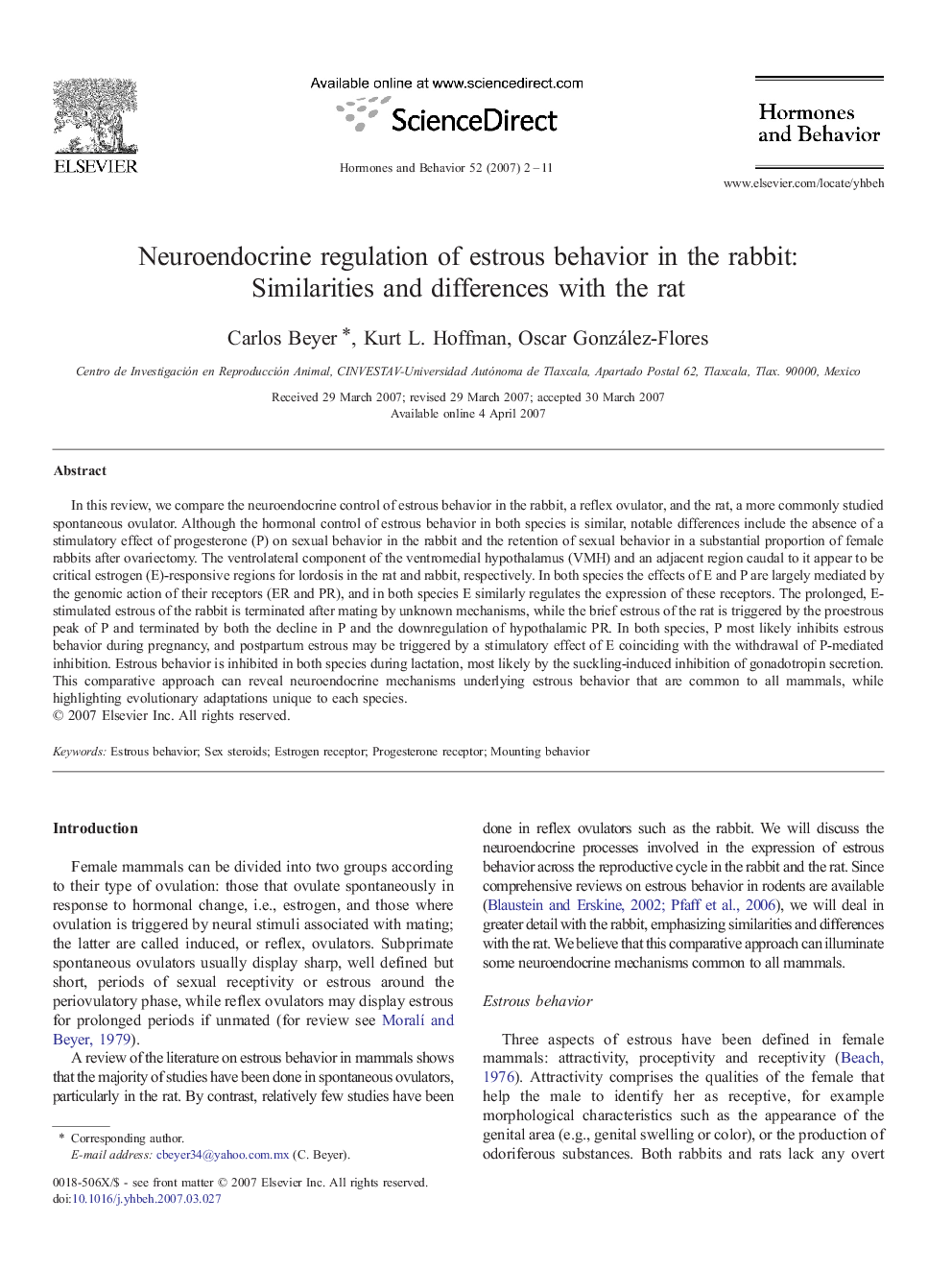| کد مقاله | کد نشریه | سال انتشار | مقاله انگلیسی | نسخه تمام متن |
|---|---|---|---|---|
| 322962 | 540300 | 2007 | 10 صفحه PDF | دانلود رایگان |

In this review, we compare the neuroendocrine control of estrous behavior in the rabbit, a reflex ovulator, and the rat, a more commonly studied spontaneous ovulator. Although the hormonal control of estrous behavior in both species is similar, notable differences include the absence of a stimulatory effect of progesterone (P) on sexual behavior in the rabbit and the retention of sexual behavior in a substantial proportion of female rabbits after ovariectomy. The ventrolateral component of the ventromedial hypothalamus (VMH) and an adjacent region caudal to it appear to be critical estrogen (E)-responsive regions for lordosis in the rat and rabbit, respectively. In both species the effects of E and P are largely mediated by the genomic action of their receptors (ER and PR), and in both species E similarly regulates the expression of these receptors. The prolonged, E-stimulated estrous of the rabbit is terminated after mating by unknown mechanisms, while the brief estrous of the rat is triggered by the proestrous peak of P and terminated by both the decline in P and the downregulation of hypothalamic PR. In both species, P most likely inhibits estrous behavior during pregnancy, and postpartum estrous may be triggered by a stimulatory effect of E coinciding with the withdrawal of P-mediated inhibition. Estrous behavior is inhibited in both species during lactation, most likely by the suckling-induced inhibition of gonadotropin secretion. This comparative approach can reveal neuroendocrine mechanisms underlying estrous behavior that are common to all mammals, while highlighting evolutionary adaptations unique to each species.
Journal: Hormones and Behavior - Volume 52, Issue 1, June 2007, Pages 2–11